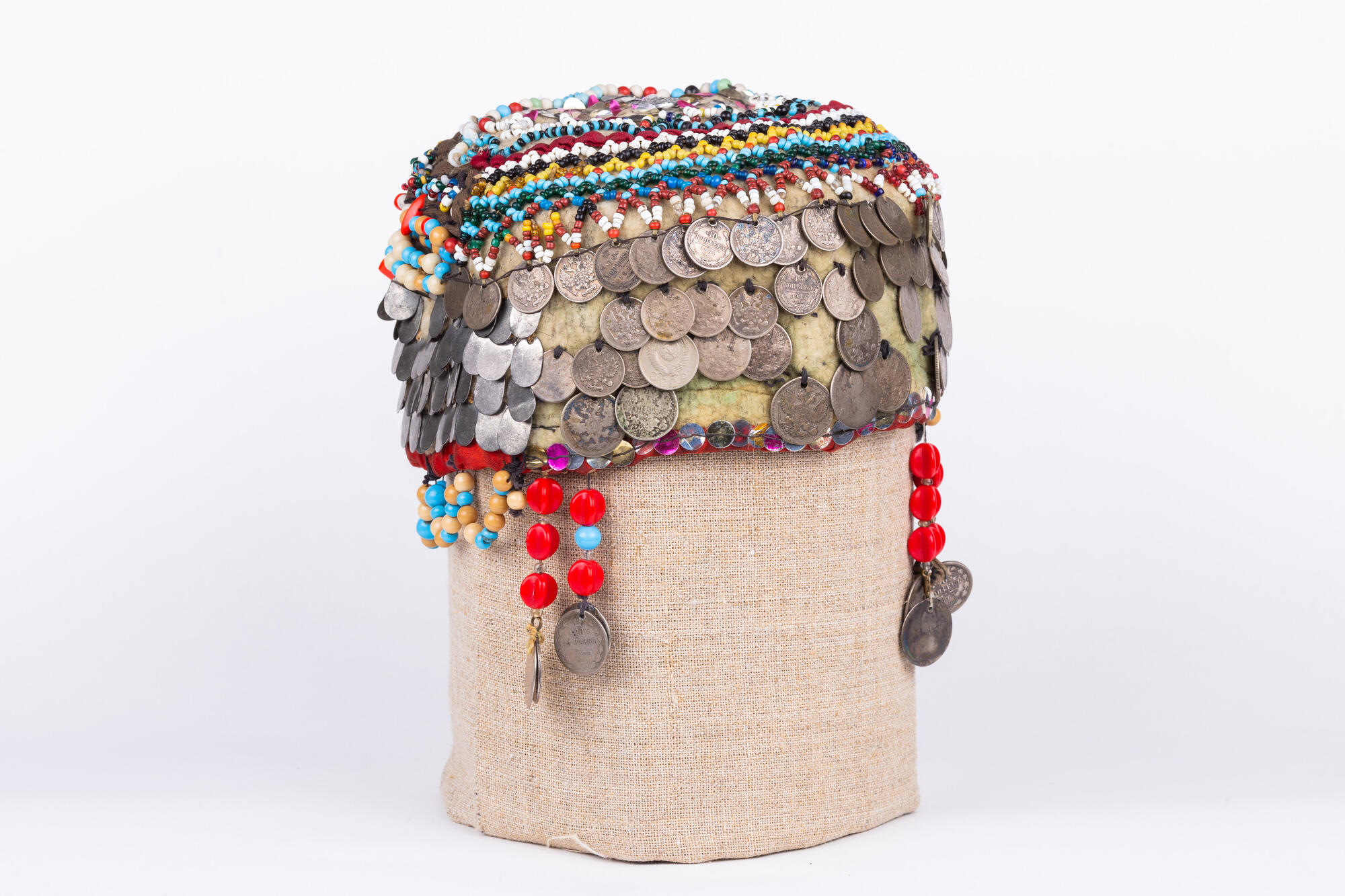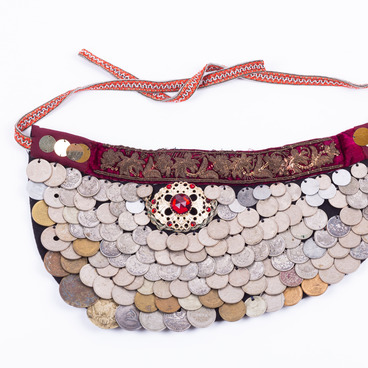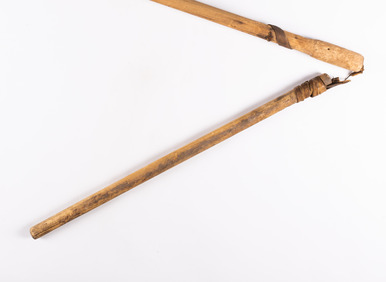Only young Mari girls could go out bear-headed. Like most European girls, they tied their hair into a beautiful single braid. Leaving the house bear-headed was strictly forbidden for mature women. It was considered a deep sin.
So, a Mari girl changed her headdress thrice during a long wedding ceremony: from a girl’s head-wear (a headband, or a headscarf), to a bride’s headdress (a takiya), and later to a head-wear of a married woman.
The museum exhibition features a takiya (from the Arabic word ‘takya’ meaning ‘a cap’), a hemispherical hat. The core element of the accessory was a simple canvas covered with a factory-made fabric. The hat surface was richly decorated with a bead net, beads, golden and silver coins, and embroidery.
Not only the Mari girls, but also the Chuvash, Tatar, and the Bashkir girls wore similar hats.
Married Mari women were to wear special headdresses: scarfs, spade-shaped sorokas, pointed shurk, and shimaksh. A traditional shimaksh was made of a rectangular cloth, the upper part of which formed a sharp cone. The main surface was covered with fine embroidery or dense silk threads, or had pieces of silk attached to it. The lower edge, which covered the woman’s back, was decorated with woolen fringe. The cap and the edge of the nape part were decorated with embroidery, coins, and beads.
Women made a tight hairdo in order to securely and conveniently attach the pointed accessory. The hairdo was to be tight in order to hold the fastener in the form of a stick, which was inserted in the shymaksh at the top of the head. So women made several small braids at the top of the head and then wrapped them around the cap. The remaining hair locks were used for a single braid under the nape. Then women lifted the braid to the solid part of the core fastening the cap with a stick, and wrapped the braid around the cap.
In the old days, judging by a woman’s costume, its details and decorations, one could tell how old a Mari woman was, where she was from, and how wealthy her family was.
So, a Mari girl changed her headdress thrice during a long wedding ceremony: from a girl’s head-wear (a headband, or a headscarf), to a bride’s headdress (a takiya), and later to a head-wear of a married woman.
The museum exhibition features a takiya (from the Arabic word ‘takya’ meaning ‘a cap’), a hemispherical hat. The core element of the accessory was a simple canvas covered with a factory-made fabric. The hat surface was richly decorated with a bead net, beads, golden and silver coins, and embroidery.
Not only the Mari girls, but also the Chuvash, Tatar, and the Bashkir girls wore similar hats.
Married Mari women were to wear special headdresses: scarfs, spade-shaped sorokas, pointed shurk, and shimaksh. A traditional shimaksh was made of a rectangular cloth, the upper part of which formed a sharp cone. The main surface was covered with fine embroidery or dense silk threads, or had pieces of silk attached to it. The lower edge, which covered the woman’s back, was decorated with woolen fringe. The cap and the edge of the nape part were decorated with embroidery, coins, and beads.
Women made a tight hairdo in order to securely and conveniently attach the pointed accessory. The hairdo was to be tight in order to hold the fastener in the form of a stick, which was inserted in the shymaksh at the top of the head. So women made several small braids at the top of the head and then wrapped them around the cap. The remaining hair locks were used for a single braid under the nape. Then women lifted the braid to the solid part of the core fastening the cap with a stick, and wrapped the braid around the cap.
In the old days, judging by a woman’s costume, its details and decorations, one could tell how old a Mari woman was, where she was from, and how wealthy her family was.



